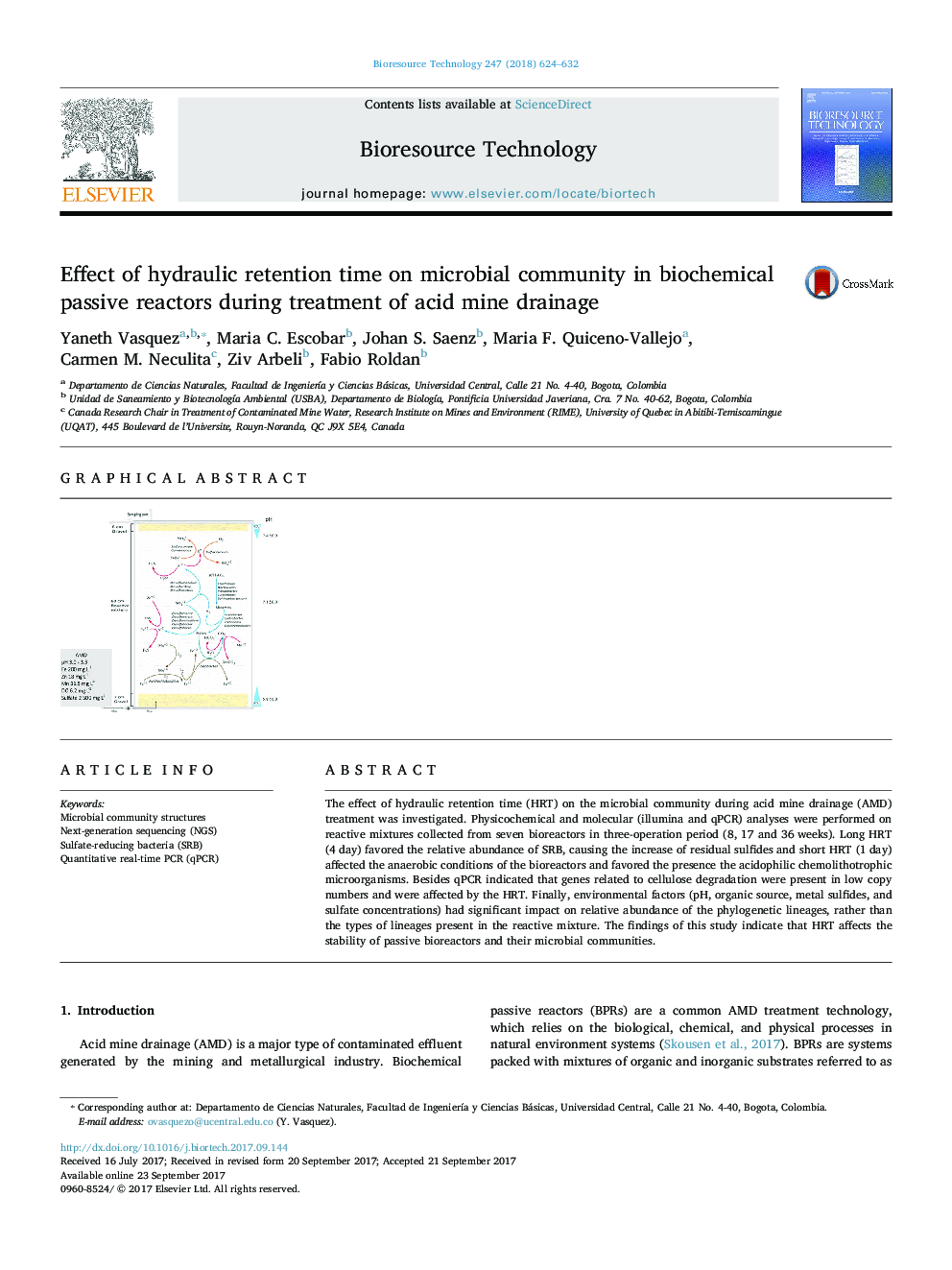| Article ID | Journal | Published Year | Pages | File Type |
|---|---|---|---|---|
| 4996685 | Bioresource Technology | 2018 | 9 Pages |
â¢Microbial communities were studied by massive sequencing of 16S rRNA gene and qPCR.â¢HRT and operation period had impact on relative abundance of the microbial community.â¢The microbial community improved the efficiency and the stability of bioreactors.â¢Operation period induced a shift in the environmental variables and microbial community.
The effect of hydraulic retention time (HRT) on the microbial community during acid mine drainage (AMD) treatment was investigated. Physicochemical and molecular (illumina and qPCR) analyses were performed on reactive mixtures collected from seven bioreactors in three-operation period (8, 17 and 36Â weeks). Long HRT (4Â day) favored the relative abundance of SRB, causing the increase of residual sulfides and short HRT (1Â day) affected the anaerobic conditions of the bioreactors and favored the presence the acidophilic chemolithotrophic microorganisms. Besides qPCR indicated that genes related to cellulose degradation were present in low copy numbers and were affected by the HRT. Finally, environmental factors (pH, organic source, metal sulfides, and sulfate concentrations) had significant impact on relative abundance of the phylogenetic lineages, rather than the types of lineages present in the reactive mixture. The findings of this study indicate that HRT affects the stability of passive bioreactors and their microbial communities.
Graphical abstractDownload high-res image (47KB)Download full-size image
